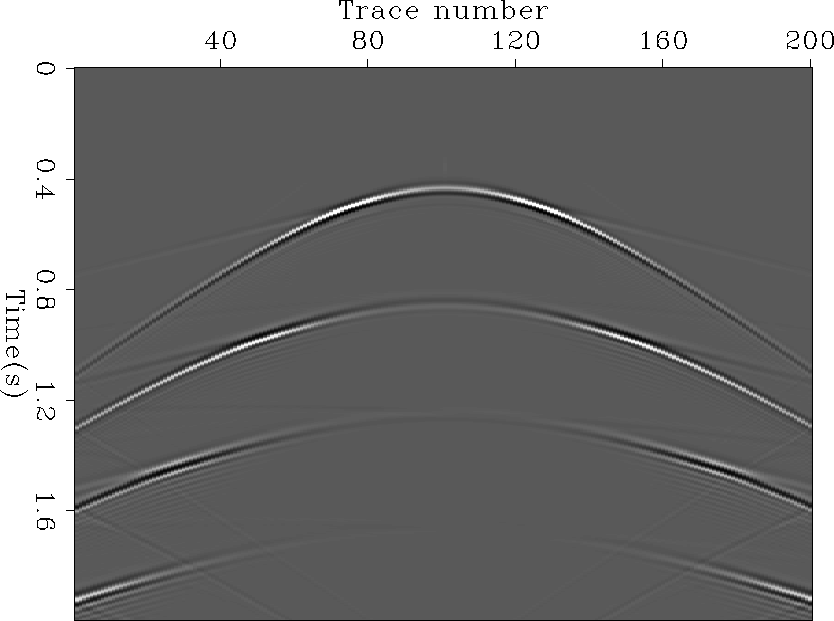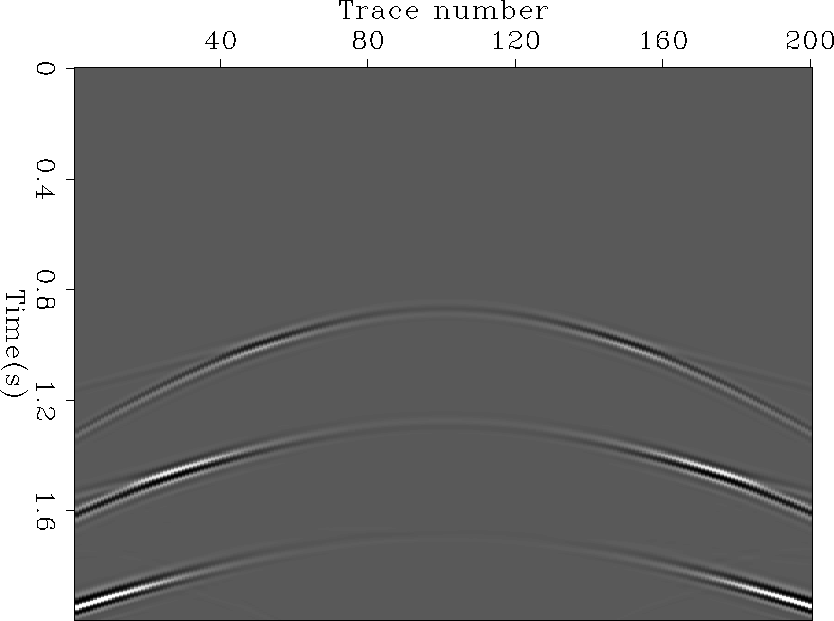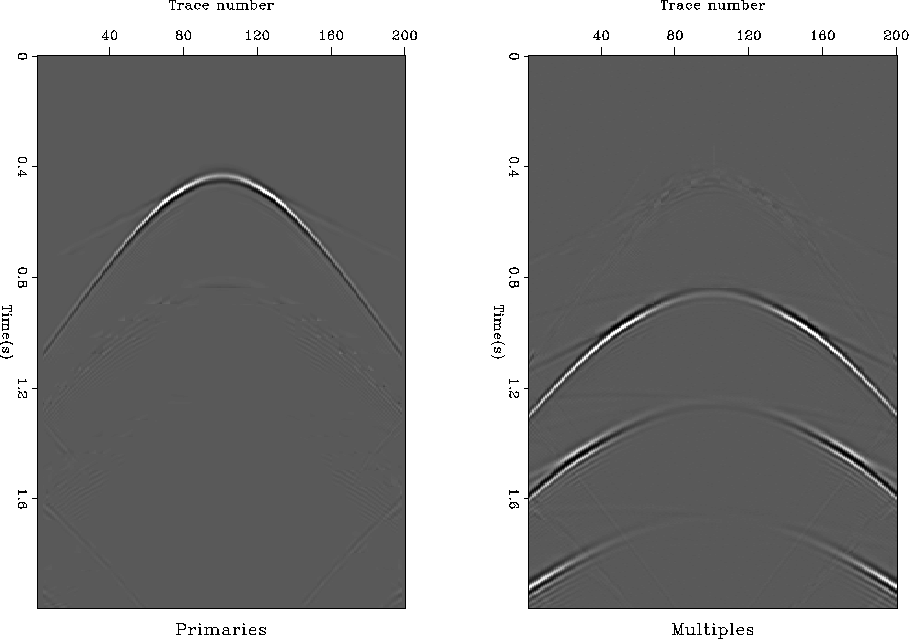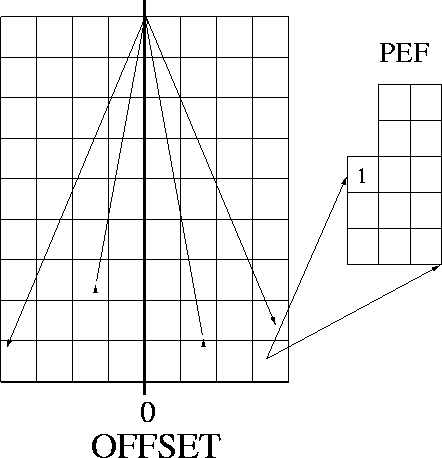




Next: Problems
Up: MULTIPLE SUPPRESSION USING SIGNAL-NOISE
Previous: MULTIPLE SUPPRESSION USING SIGNAL-NOISE
At this early stage we decided to show how the method works on
a simple synthetic. Figure 1 shows a sea floor
with a series of water-bottom multiples. The amplitude of the
reflector increases as a function of angle, something that
frequency methods have had difficult time handling.
The multiple model was
constructed by downward continuing Bevc (1995) the sea floor reflection,
Figure 2.
As a result the
amplitude information is incorrect, but the kinematics is correct.
bee-cmp
Figure 1 A simple CMP gather with multiples.
|
|  |





bee-mult
Figure 2 CMP gather in Figure 1
datumed to the surface and back to the seafloor.
Note how the amplitude information is
wrong but the general kinematics is correct.
|
|  |





Once we have our data and noise model we estimated a space varying filter
for each by applying fitting goal (4).
To conserve memory we put a new filter every 15th point in time
and third point in offset (Figure 4).
These two filters were then used, and
fitting goal (3) were applied. Figure 3 shows
the result of the separation. We can see some residuals of
the filter patches but generally we have done a good job in removing
the multiple while preserving the signal.
signoi
Figure 3 The estimated primaries and mulitpes from
Figure 1.




 pef
pef
Figure 4 Space varying filter composition. A different
filter is placed inside each patch. The filter estimation problem
is done globally, with the filter coefficient smoothed in a radial
direction.






Next: Problems
Up: MULTIPLE SUPPRESSION USING SIGNAL-NOISE
Previous: MULTIPLE SUPPRESSION USING SIGNAL-NOISE
Stanford Exploration Project
10/25/1999




